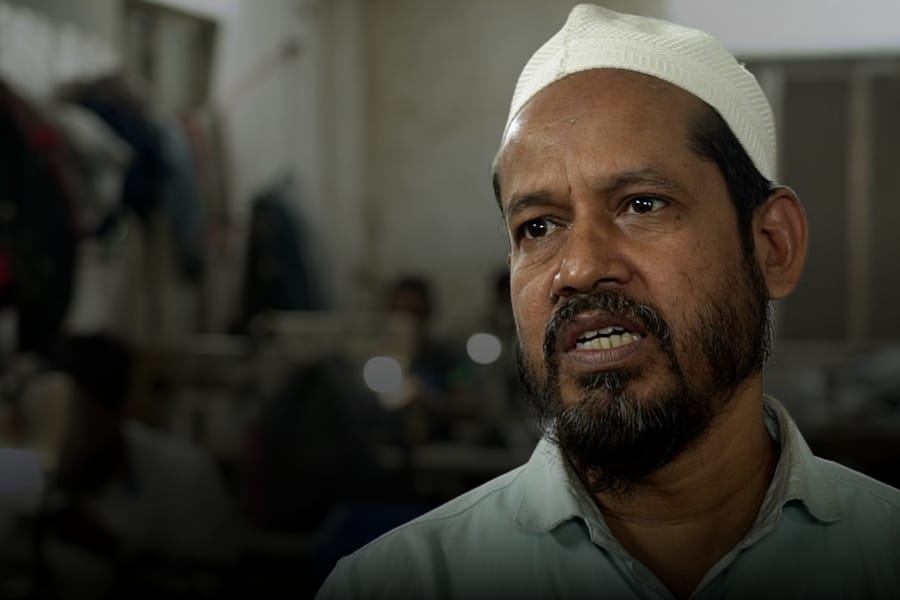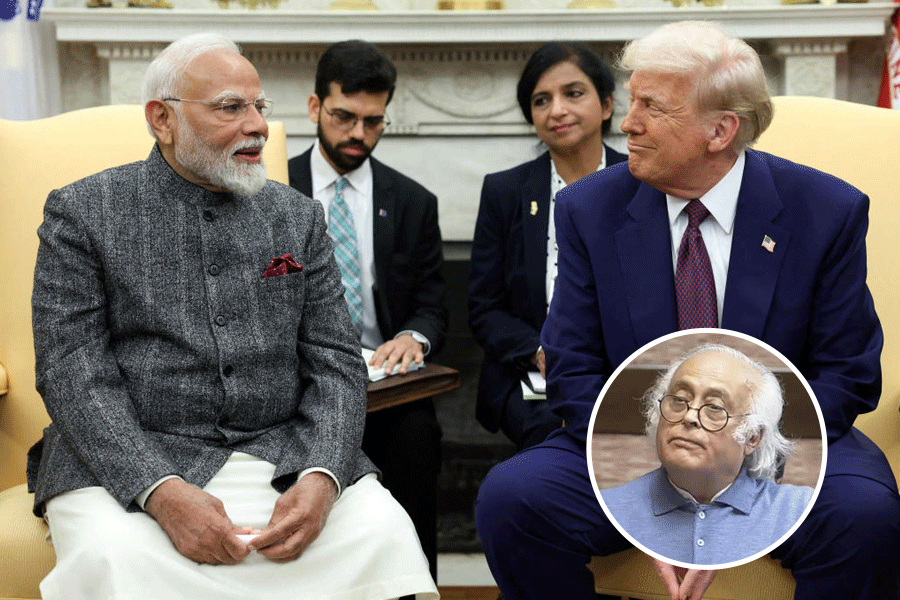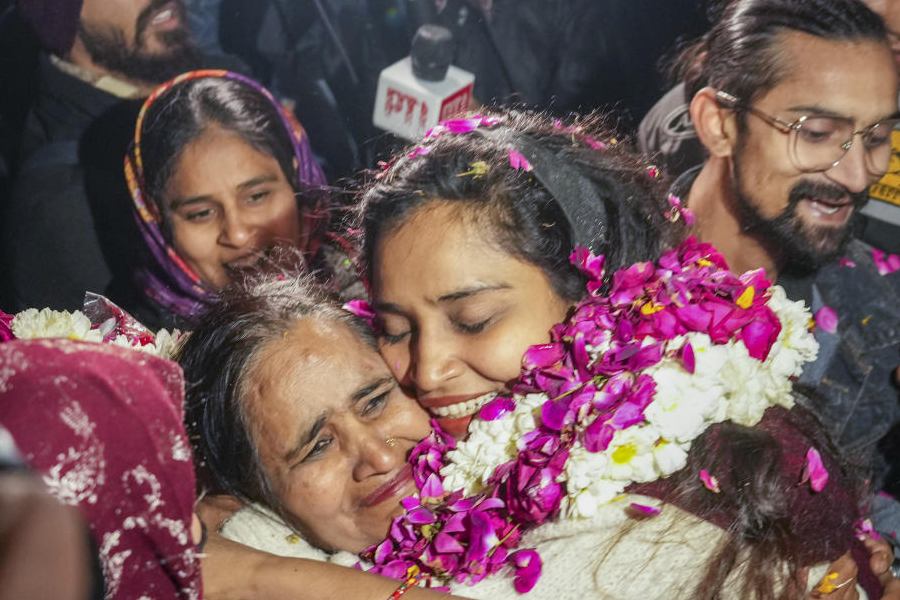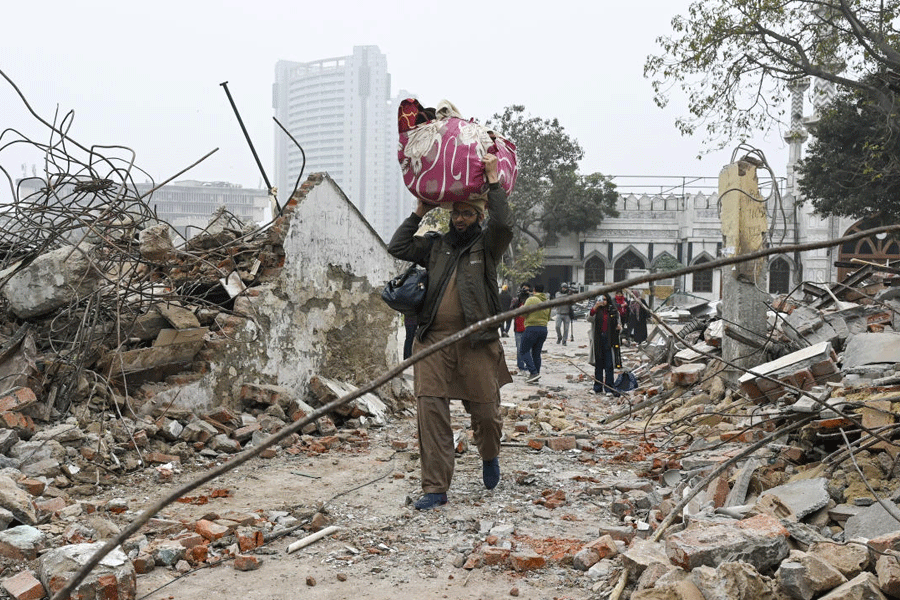 |
| Painter Manjit Bawa, who died in Delhi on Monday. He was 67. |
New Delhi, Dec. 29: Eminent painter Manjit Bawa died today after three years in a coma, but patients across India continue to receive life support amid a legal vacuum and little public debate on the agony of the wait outside intensive care units.
Inside intensive care units with patients on life support, machines reign over human organs. A ventilator breathes for the lungs, a feeding tube delivers nutrients, other tubes extract the body’s wastes and deposit them into plastic bags.
Sometimes, the wait may be for a flick of a finger, other times, it’s for the irreversible cessation of reflexes from the brain stem, a region just above the spinal cord — the seat of consciousness and the capacity for unassisted breathing.
Critical care specialists have urged the government to legislate on when doctors may legally withhold or withdraw life support to patients in terminal stages of illnesses but, they say, there has been little progress.
“There’s been virtually no debate in India on the issue of withholding or withdrawing life support,” said Raj Kumar Mani, past president of the Indian Society of Critical Care Medicine.
“We have no laws on this, and there’s very little public awareness.”
Sections of the Indian medical community have been arguing that withholding or withdrawing treatment to patients in terminal stages will allow people to die more dignified deaths, and reduce the emotional and financial burden on families.
The expense of maintaining patients on life support in intensive care units in private hospitals can range from Rs 10,000 to Rs 20,000 a day, according to a doctor from a corporate hospital in New Delhi.
“We should accept that there are medically hopeless situations in many chronic end state conditions where [continuing with] treatment will only prolong the suffering and deliver a bad death to patients,” Mani told The Telegraph.
Nearly 15 years ago, the government changed Indian law to define brain death -- a condition in which the brain stem is irreversibly ‘dead’ -- but the heart and lungs can continue to function with the help of ventilators. The law was enacted to facilitate organ transplants because such brain-dead, but heart-beating-cadavers are the ideal sources of organs like the liver and the heart.
Brain death is diagnosed through tests that look for brain stem reflexes, conducted at least twice six hours apart, by an independent neurologist who has not been part of the team treating the patient.
“Once brain death is diagnosed, we explain this to the family,” said Deepak Govil, an intensive care specialist at Artemis Hospital, Gurgaon. “But it’s not always easy to convince family members because what they see is someone with a beating heart, breathing with the help of a ventilator.”
Doctors say the dilemma is intensified when patients are in a prolonged coma, what medical experts describe as a persistent vegetative state where the brain is damaged, but not brain dead. “In such cases, we cannot predict the outcome. There are a few miracle stories, but I’ve never seen one,” Govil said.
The course and length of therapy, in such cases, is often dictated by family and finances.
“Under the law, we can’t withhold treatment, but nor can we force treatment on an unwilling patient,” said one critical care specialist. “So, sometimes, on a request of the family, we discharge the patient.”
The Indian Society of Critical Care Medicine had three years ago proposed guidelines for limitation of life support to terminally ill patients, specifying the conditions under which treatment could be withheld or withdrawn through a transparent process.
Society members say limiting life support is common in the developed countries. Studies in the US and Europe have suggested that withholding or withdrawing life support preceded in 9 in 10 deaths of patients in critical care units. A study from Mumbai three years ago had shown a corresponding figure of only two in 10.












